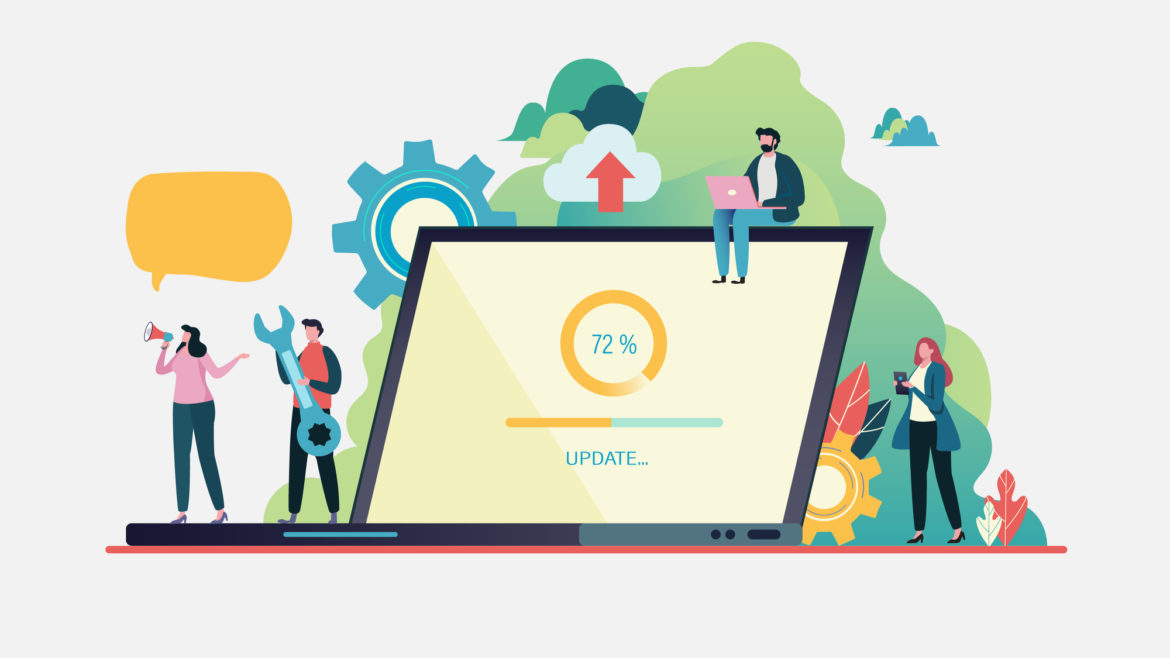It’s time to upgrade your software! Hopefully this means a time full of exciting new enhancements and not a painful experience. How your core processing vendor–or really any vendor–rolls out a release can make a big difference in your experience.
In this article, I go through my thought process for developing an effective documentation strategy for rolling out new software releases, specifically in how the changes are communicated. Try asking yourself these five questions and see how your vendor stands up to the test!
Do you understand what you are getting?
A release summary with a lot of marketing or technical words might not make much sense. That’s a red light signaling that your software vendor is trying to make features sound bigger and better than they are. When documenting a release, I’m always careful to ensure new acronyms or product names are explained in a way that the layperson can understand. The sections should be well written and in a manner that clearly summarizes the package.
An effective release summary clearly lays out information on all the new enhancements of the release and what adoption means to credit unions. It should be clear what you are getting when you read your release summary.
Do the release materials clearly explain what is free, what is “pay to play,” and what requires special activation?
It’s no fun finding out about a new feature or product that gets you excited only to find out it comes with a hidden price or that it requires help to turn it on. Look for ways that your core processing vendor shows that they put a value on your time and money, even in their release summary.
A well-written release summary should tell you what you get automatically, what requires activation on your part or the vendor’s to activate, and which features have a fee. Better yet, that information should be relayed at a glance on the first page of any release summary.
Does your vendor show you the value of your relationship with them when they roll out a new release?
It takes only a little extra to thank credit unions who assisted with the design or testing of new features. Watch for these kinds of shout-outs in your release summary!
In our case, sometimes the very idea that kicked off the development came from a credit union. Sometimes insightful input comes from a client focus group. A release summary should reflect the significance the vendor places on these relationships, which often are integral to software development.
Does your vendor help you plan if you don’t implement new features right away?
Think about the last time your phone got a major update. Did you read through all the details of new features? Probably not, and that’s fine. But when you want to go back and see what features you have that you didn’t know were there, how easy is it to find that information?
Your vendor likely can provide you an easy way to look back through years–maybe decades–of release summaries. But are they? We think they should. And that’s why we make it easy to find information about previous releases for when you are finally ready to implement them.
As with any credit union, you may not always implement things right away. Sometimes implementing new features take the planning of several departments. You may need to wait until the new features meet the objectives of your business plan. When you find you finally have the time to implement some new features, you will appreciate when it’s easy to find the recent additions that you might want to consider.
Does your release summary make you feel excited about where you are going?
You might not even think of this one, since it’s a release summary, not a TED talk! But the release summary is a vehicle for your vendor to tell you a lot more than just what is in the release.
The way the release summary is written reflects the vendor’s spirit of innovation and vision. It should paint a picture of where you are and where you will be. It should leave you ready and excited about the promise of the new tools that are coming to you with the release.
Are you ready to move ahead in collaboration with your vendor?
Make sure your vendor has an effective documentation strategy to answer all these questions!
Preparing an effective strategy to communicate new enhancements of a release is not something that happens overnight. It takes careful planning to write a release summary in a way that is worth repeating every time. Not everything can go in a release summary though. How well is that release document backed up by detailed reference materials to help you along the way?
If you are evaluating a vendor on its release materials, you might find they tackle these five questions in different ways than my core processing vendor. Regardless, they are important questions to ask if you are evaluating a vendor on whether it has developed an effective documentation strategy.






















































